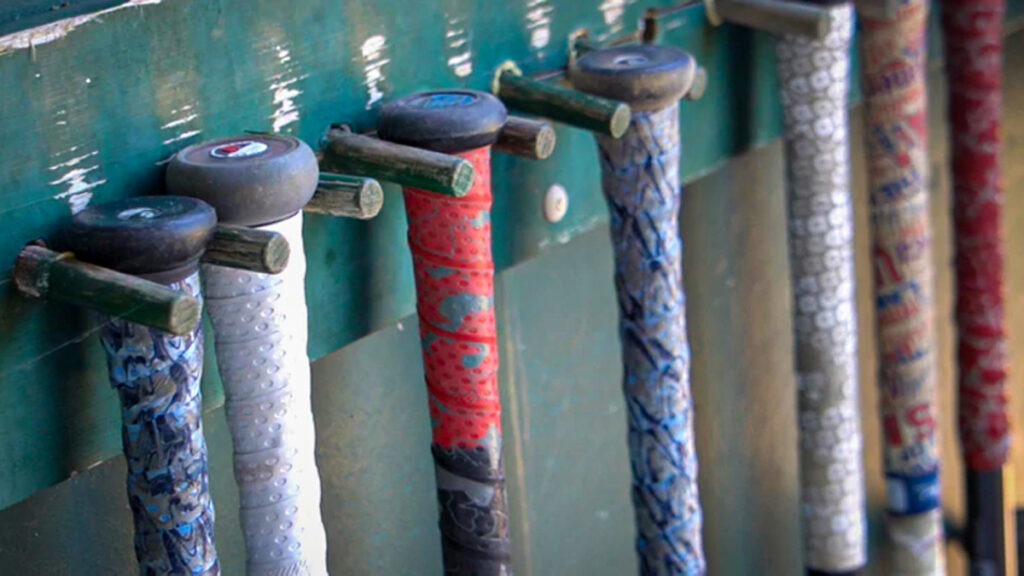Summary
- The goal for every batter should be to find baseball hitting drills that improve on weaknesses and fit into a consistent practice routine.
- These baseball hitting drills can be done both with the top hand or bottom hand, so we’ll address teaching points for both: Let the elbow lead the bat through the zone.
- With both baseball hitting drills, the main goal is to trace out the path that you want the bat to take through the zone.
- For more detailed instruction, check out the video below: For players who have a long swing—or are still learning good, fundamental swing mechanics, the fence drill gives good feedback in creating a short, compact swing.
- Try the fence drill with batting cage netting or a thickly padded wall, neither of which should hurt you or your bat if you hit it.
In this article, you'll learn three baseball hitting drills that you can fold into your routine. The goal for every batter should be to find effective drills that improve on weaknesses and fit into a consistent practice routine. These baseball practice drills are a great start.
Hitting Drill #1: The One-Handed Drill
Chances are, at some point you’ve seen a one-handed drill. In the video below, you’ll see a high-level hitter perform a few reps with each hand.
One-Handed Drills Help Players Feel and Understand the Swing Path
These drills can be done both with the top hand or bottom hand, so we’ll address teaching points for both:
Top Hand Only – Let The Elbow Lead
Let the elbow lead the bat through the zone. This helps the barrel get on plane with the pitch more quickly.
“Getting on plane” means that the barrel of the bat is moving in the same line of travel as the ball, which gives the greatest likelihood of hard contact.
Bottom Hand Only – Don’t Lock Out Too Soon
It's crucial on bottom-hand drills to not let the arm lockout too soon. Instead, be sure to flow through the point of impact with the arm relaxed, yet powerful.
With both drills, the main goal is to trace out the path that you want the bat to take through the zone.
As a final tip, be sure to use a mini bat. A full-sized bat will be far too long and heavy for one-handed use.
For more detailed instruction, check out the video below:
Hitting Drill #2: The Fence Drill
For baseball players who have a long swing or are still learning good, fundamental swing mechanics, the fence drill gives good feedback in creating short, compact swings.
The Fence Drill Give a Player Feedback on Creating a Short, Compact Swing
“Casting the hands” or being “long to the ball” are common terms that mean a player's barrel is going to travel around the ball, rather than on a more direct path to it.
To hit high-velocity pitches, a shorter and more direct swing path to the ball is essential.
Try the fence drill with batting cage netting or a thickly padded wall, neither of which should hurt you or your bat if you hit it.
Take These Drills and Form a Hitting Routine!
Hitting drills come in many shapes and sizes. It's crucial to try lots of them to find which ones work best for you to help improve your baseball swing.
Try different drills from different instructors and form a routine that keeps you on track. Drills are tools that will help you accomplish a goal. You should always set conditions and define what success is for the drill. This keeps you training methodical and consistent, so changes for better or worse are easily measured.
Form Your Routine Based on Strengths, Weaknesses & Goals
Questions to ask yourself when forming a routine:
What do I do well?
What do I struggle with?
How do I want to feel before a game or after a practice session?
What mechanical adjustments am I working on making?
What are my goals for the day, week, month or season?
What drills help me succeed?
The goal is for you to become the best version of yourself. From this list of questions, choose your favorite handful of drills to create a routine that works for you.
What Baseball Hitting Drills Do You Like Best?
We here to support your vision, your goals and your baseball journey.
Leave a comment and let us know which drills you use, instructors you follow, or mental techniques you live by to be at your best. We'll compile them periodically into shared content for the entire community.
You May Also Like
How to choose the best throwing net - Pros and cons of the 2 most popular pitching nets
